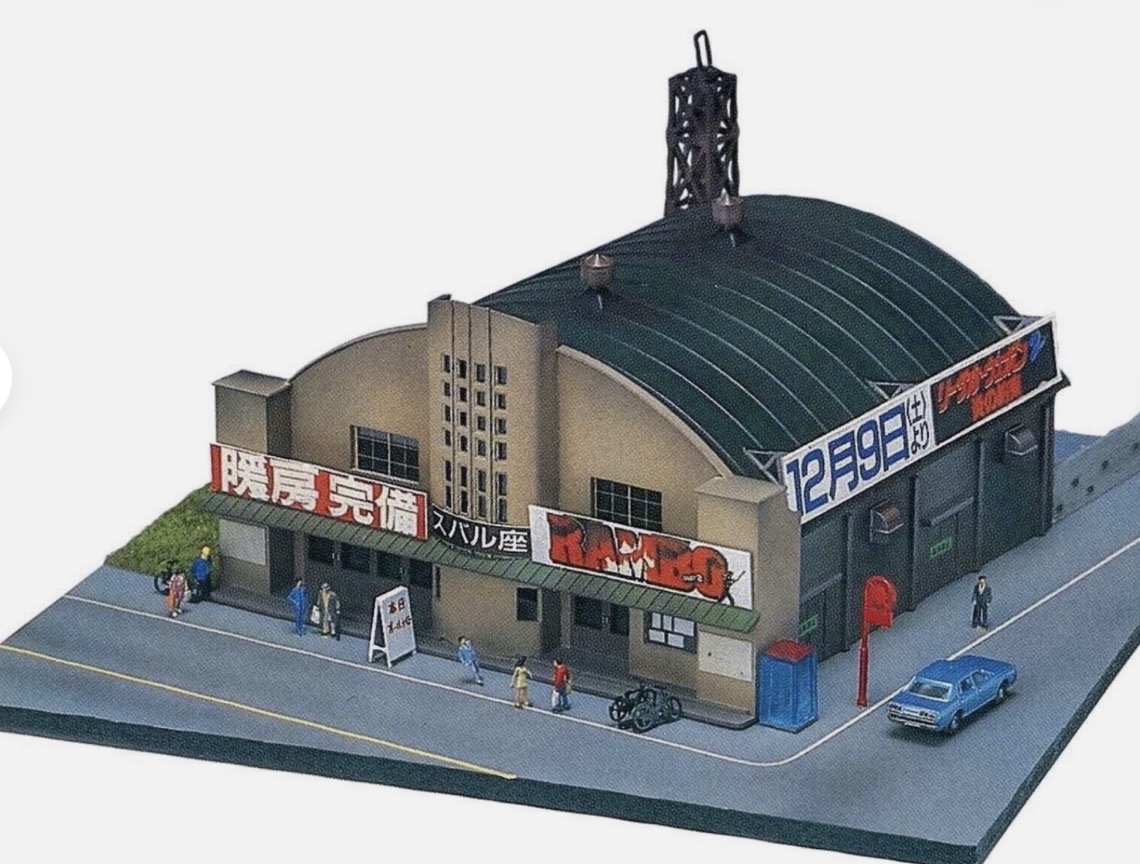Road Name History:  Commercial structures are any buildings or other man-made structures whose principal purpose is trade. These can be high-rise officer towers, gas stations or fruit stands. Any structure where end-user customers come to buy things from sellers of that product or service are consider commercial structures.
Commercial structures are any buildings or other man-made structures whose principal purpose is trade. These can be high-rise officer towers, gas stations or fruit stands. Any structure where end-user customers come to buy things from sellers of that product or service are consider commercial structures.
This group will therefore include quite large as well as quite small buildings. Models of these buildings might be kits or pre-assembled. They might be painted or undecorated. They might come with a host of accessories and figures or they might be fairly Spartan.

This group will therefore include quite large as well as quite small buildings. Models of these buildings might be kits or pre-assembled. They might be painted or undecorated. They might come with a host of accessories and figures or they might be fairly Spartan.
Brand/Importer Information: Green Max may be little known, but they offer a large range of kits and a few 'ready-to-run' of Japanese railway models and more important a large range of accessories of typical Japanese design, all in Japanese N-scale (1:150)
Green Max kits are usually simple to build, but painting and finishing requires careful attention, the catalogue includes a full manual for assembly, painting and finishing, albeit only in Japanese, the many photographs make it clearly understandable. Most kits can be build in several varieties, the multiple-unit train models in particular, so you have the choice of several prototypes. This is why the bogies and pantographs (and the eventual power unit) are NOT included in the kits, they vary with the choice of prototype and would otherwise make the kits more expensive.
The Green Max rolling stock range is extensive and stands clearly out from the ranges by Kato and Tomix. Green Max makes mainly models of the 1950's and 1960's, many of an even earlier age and Green Max has a large range of trains used by the many private railways of Japan. As mentioned above it is often possible to choose from more than one model when assembling the kit. It is best to decide before you buy the kit, the catalogue gives you the information needed, only then you can order the right bogies and pantographs. Different front-ends and possibly sides are included in the kit.
Green Max kits are usually simple to build, but painting and finishing requires careful attention, the catalogue includes a full manual for assembly, painting and finishing, albeit only in Japanese, the many photographs make it clearly understandable. Most kits can be build in several varieties, the multiple-unit train models in particular, so you have the choice of several prototypes. This is why the bogies and pantographs (and the eventual power unit) are NOT included in the kits, they vary with the choice of prototype and would otherwise make the kits more expensive.
The Green Max rolling stock range is extensive and stands clearly out from the ranges by Kato and Tomix. Green Max makes mainly models of the 1950's and 1960's, many of an even earlier age and Green Max has a large range of trains used by the many private railways of Japan. As mentioned above it is often possible to choose from more than one model when assembling the kit. It is best to decide before you buy the kit, the catalogue gives you the information needed, only then you can order the right bogies and pantographs. Different front-ends and possibly sides are included in the kit.
Item created by: CNW400 on 2024-09-17 21:26:59. Last edited by CNW400 on 2024-09-17 21:27:00
If you see errors or missing data in this entry, please feel free to log in and edit it. Anyone with a Gmail account can log in instantly.
If you see errors or missing data in this entry, please feel free to log in and edit it. Anyone with a Gmail account can log in instantly.



